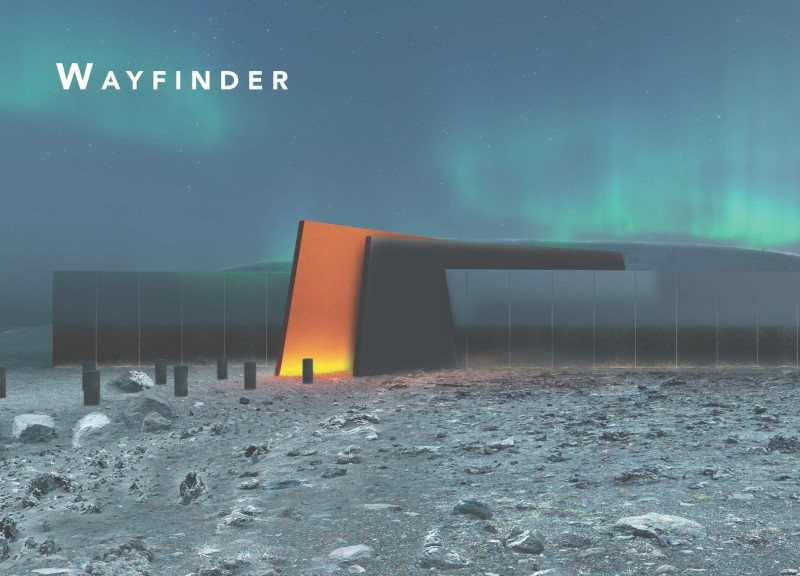5 key facts about this project
The Wayfinder is situated in a dramatic volcanic landscape, designed to serve as a visitor center and navigation point for trekkers. The structure reflects a strong connection to its environment, integrating with the terrain while providing spaces that enhance the visitor experience. Guided by the idea of terroir, the building blends with its surroundings, adapting to changes in light and climate.
Monumental Tunnel
At the center of the design is a monumental tunnel that divides the building. This feature serves as a welcoming point for visitors, providing direction and focus. The tunnel creates a visual anchor that draws attention to the towering volcanic formations. It elevates the experience of entering the building, transitioning visitors from the outdoor landscape to the welcoming interior spaces.
Materiality and Aesthetics
The exterior is clad in satin polished, anodised aluminium panels, a choice that brings a modern touch and reflects the surrounding landscape. These materials interact with the varied atmospheric conditions, altering their appearance throughout the day. One side of the building features large glass walls that let in natural light, offering impressive views of the volcano and creating a strong connection between the inside and outside.
Interior Layout and Experience
Inside, the Wayfinder is organized to encourage exploration. Visitors stroll through semi-open walking areas, making choices about where to go next. They can enter the café, visit the exhibition space, or follow paths that lead deeper into the volcanic terrain. This thoughtful layout allows for diverse interactions, catering to both social gatherings and quiet moments.
Landscape Integration
The Wayfinder harmonizes with its natural surroundings, celebrating the unique features of the geological landscape. The design’s purpose is functional, but it also invites appreciation of the environment. From a distance, the structure integrates with the land, merging human design with the beauty of volcanic formations. The building’s surfaces respond to changing light, creating an ongoing relationship between the architecture and the geological context.






















































